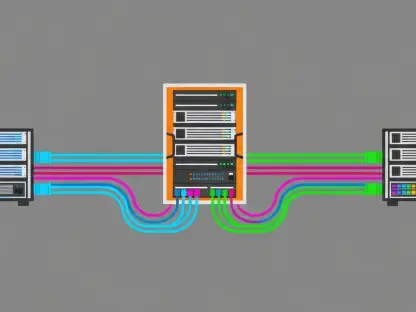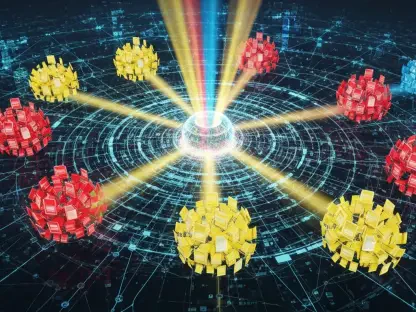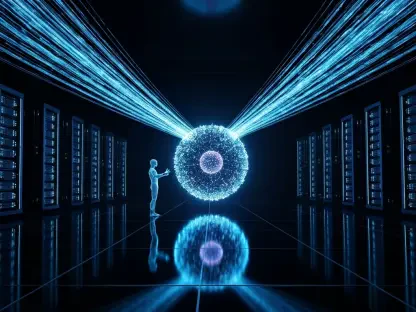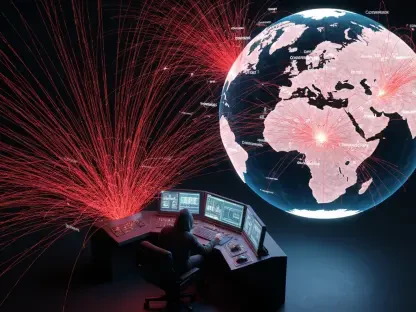In a world where content is king, the pressure to produce flawless, engaging material at lightning speed has never been greater, and artificial intelligence (AI) is stepping up as a revolutionary force in editing and proofreading. Once the exclusive domain of meticulous human editors armed with red pens and style guides, these fields are now experiencing a seismic shift as AI tools evolve from basic error-catchers to sophisticated partners in crafting polished prose. This technology isn’t just about fixing typos anymore; it’s about enhancing clarity, maintaining tone, and streamlining workflows for writers and businesses alike. As digital content creation continues to explode across industries, the integration of AI offers a compelling solution to balance efficiency with quality. But this transformation raises critical questions: How exactly is AI reshaping the editorial landscape? What are its strengths, and where does it fall short? This exploration delves into the profound impact of AI on editing, uncovering the technological advancements driving this change, the tangible benefits it brings, and the challenges that remind everyone of the irreplaceable value of human insight. It’s a pivotal moment where technology and creativity intersect, promising to redefine how polished content comes to life.
The Technological Leap in Editing Tools
The evolution of editing tools over recent decades stands as a testament to the power of innovation, transitioning from rudimentary spell-check features to intelligent AI systems that understand the intricacies of language. Early software could only flag basic spelling errors or grammatical missteps based on rigid rules, often missing the context that gives writing its depth. Today, powered by natural language processing (NLP) and machine learning (ML), AI tools analyze text with remarkable sophistication, offering suggestions that improve flow, adjust tone for specific readers, and even rewrite sentences for greater impact. This leap signifies a fundamental change in how content is refined, moving beyond mere correction to a collaborative process where technology amplifies human intent. The shift is particularly striking in how AI adapts to user preferences over time, learning from feedback to deliver increasingly tailored edits that resonate with a writer’s style or a brand’s voice.
Underpinning these advancements is a complex blend of technical mechanisms that enable AI to perform tasks once thought exclusive to human editors. NLP allows machines to interpret and generate text that mirrors natural human communication, breaking down sentences to understand meaning rather than just structure. Machine learning, trained on vast datasets of written content, identifies patterns and refines its approach with each interaction, while rule-based systems ensure consistency in style and formatting. This combination empowers AI to handle a spectrum of editing needs, from eliminating punctuation errors to suggesting nuanced stylistic changes. Such capabilities highlight why AI has become a cornerstone in modern content creation, offering tools that not only save time but also elevate the quality of the final product in ways previously unimaginable.
Practical Impacts and Advantages of AI in Editing
AI’s current capabilities in editing and proofreading are reshaping workflows with an impressive array of functions that cater to diverse content needs. At its most basic level, AI excels in proofreading, detecting spelling, grammar, and punctuation errors with a precision that often surpasses multiple rounds of human review, especially for shorter pieces. Beyond this, in copyediting, it enhances clarity and conciseness, making dense or convoluted text more accessible—a critical asset for teams managing high volumes of material under tight deadlines. Perhaps most intriguing is its ability to perform stylistic edits, aligning content with a specific tone or brand voice across documents. While not yet perfect in capturing the full authenticity of human expression, these features demonstrate AI’s potential to act as a versatile partner in refining written work, pushing the boundaries of what automated tools can achieve.
The benefits of integrating AI into editing processes extend far beyond technical prowess, delivering tangible advantages for writers, editors, and businesses navigating a content-saturated landscape. Speed stands out as a primary gain, with AI automating repetitive tasks like grammar checks, freeing up hours that can be redirected toward creative or strategic priorities. Scalability is another key perk, as AI ensures uniformity in style and quality across extensive content libraries, a task that would be daunting for human teams alone. Additionally, by improving readability, these tools indirectly enhance search engine optimization (SEO), helping content perform better online. For freelancers, small agencies, and large enterprises alike, AI emerges as a catalyst for productivity, enabling higher output without compromising on the polish that audiences expect.
Limitations and the Essential Human Element
Despite its remarkable strides, AI in editing is not without significant hurdles that underscore its current boundaries. One prominent challenge lies in its occasional inability to grasp context or subtle nuances, which can result in suggestions that misalign with a writer’s intent or dilute the strength of an argument during rewrites. Over-dependence on such technology also poses a risk, potentially leading to a decline in editors’ critical skills if manual oversight diminishes. Ethical dilemmas further complicate the picture, particularly around authorship—when AI generates or heavily revises text, who claims ownership of the final product? These issues serve as a reminder that while AI can streamline many aspects of editing, it cannot fully replicate the depth of understanding and judgment that human editors bring to the table, especially in complex or emotionally charged content.
Rather than rendering human editors obsolete, AI is redefining their role as indispensable collaborators in a tech-enhanced ecosystem. With mundane tasks like basic error correction handled by machines, editors can focus on higher-value activities such as safeguarding a unique voice, verifying factual accuracy, and navigating intricate contextual demands. This evolution positions them as curators who refine and elevate content beyond what algorithms can achieve alone, ensuring that the heart of a message remains intact. It also emphasizes the importance of human intuition in addressing cultural sensitivities or creative subtleties that AI might overlook. Far from being replaced, editors are becoming strategic overseers, blending technology with their expertise to produce work that resonates on a deeply human level.
Specialized Challenges and Future Prospects
AI’s effectiveness in editing varies significantly when applied to specialized content, revealing both its potential and its limitations in niche domains. In fields like academic, legal, or technical writing, where precision and subject-matter expertise are paramount, AI can assist with formatting, grammar, and readability but often falls short in verifying factual accuracy or interpreting field-specific jargon. Human experts remain essential in these areas to ensure content meets rigorous standards and maintains credibility. This disparity highlights a critical boundary: while AI can handle surface-level refinements across a broad range of texts, it struggles to match the depth of knowledge required in highly specialized contexts, reinforcing the need for a balanced approach that leverages both technology and human insight.
Looking toward the horizon, the future of AI in editing holds exciting possibilities that could further transform content creation over the coming years, from now through 2027 and beyond. Innovations on the cusp include personalized AI models tailored to mimic an individual writer’s style or a company’s distinct tone, offering a level of customization that feels almost bespoke. Additionally, emerging tools might become “file-aware,” capable of understanding complex document structures like long manuscripts or PDFs, which would be a significant boon for publishers and designers handling intricate projects. Such advancements suggest a trajectory where AI becomes even more integrated into creative workflows, promising to tackle larger, more nuanced challenges while still requiring human oversight to ensure authenticity and ethical integrity in the final output.
Balancing Act for Tomorrow’s Editorial Landscape
Reflecting on the journey of AI in editing, it’s evident that this technology has reshaped the industry by automating routine tasks, accelerating timelines, and maintaining consistency across vast content ecosystems. Its adoption marked a turning point, allowing content creators to scale their efforts while meeting the relentless demand for quality in a digital age. Yet, the limitations—particularly in nuanced interpretation and specialized domains—serve as constant reminders of the boundaries of automation during this transformative period. Ethical questions around authorship and transparency also emerged as critical points of discussion, challenging the industry to define responsible practices as AI’s influence grew.
Moving forward, the path to maximizing AI’s potential in editing lies in fostering a symbiotic relationship between technology and human expertise. Embracing clear strategies, such as crafting precise prompts for AI tools and maintaining rigorous human quality checks, can enhance outcomes while preserving editorial integrity. Investing in skills like prompt engineering and domain-specific knowledge will equip editors to navigate this evolving landscape with confidence. As AI tools continue to advance, the focus should remain on using them as allies to amplify creativity and precision, ensuring that the human touch—vital for context, voice, and ethical judgment—remains at the core of every piece of content. This balanced approach promises a future where technology and humanity collaborate to redefine the art of editing for generations to come.









